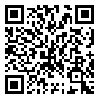Volume 18, Issue 3 (1-2025)
مرتع 2025, 18(3): 399-418 |
Back to browse issues page
Download citation:
BibTeX | RIS | EndNote | Medlars | ProCite | Reference Manager | RefWorks
Send citation to:



BibTeX | RIS | EndNote | Medlars | ProCite | Reference Manager | RefWorks
Send citation to:
Javadi S, Ranjbar Fordoie A, Khosravi H, Eskandari Damaneh. Investigating the Impact of Drought on Vegetation and Evapotranspiration Using MODIS Sensor Images: A Case Study of Tehran Province. مرتع 2025; 18 (3) :399-418
URL: http://rangelandsrm.ir/article-1-1265-en.html
URL: http://rangelandsrm.ir/article-1-1265-en.html
Faculty of Natural Resources and Earth Sciences, Kashan University, Kashan
Abstract: (1041 Views)
Background and objectives: Vegetation is a critical component of ecosystems and is significantly impacted by climatic events, including drought. Indices such as the Enhanced Vegetation Index (EVI) and Potential Evapotranspiration (PET) are effective tools for evaluating drought effects, obtained through the MODIS sensor. Numerous studies have identified climatic factors, including drought, as primary determinants of plant community growth and dynamics. Thus, monitoring drought and vegetation changes is essential for effective regional management. This study aims to assess the effects of drought on vegetation and potential evapotranspiration using MODIS sensor data.
Methodology: The Palmer Drought Severity Index (PDSI) was utilized to assess drought, while EVI and PET indices were derived from MODIS satellite images. Temperature and precipitation data from 13 synoptic stations in Tehran Province, spanning 2001 to 2021, were obtained monthly from the national meteorological organization. Using Inverse Distance Weighting (IDW), the corresponding maps were plotted in ArcGIS. Terra satellite series images from the USGS database were used to obtain EVI and PET data. The MOD13A3 sensor with a 1 km spatial resolution in monthly intervals provided EVI data, while the MOD16A2 sensor with a 500 m spatial resolution in 8-day intervals supplied PET data. Trends in PDSI, EVI, and PET were calculated using linear regression and the non-parametric Kendall test. Pearson correlation coefficient was applied to investigate the correlations between indices. Additionally, correlation analysis evaluated the impact of drought on EVI and PET in different climates.
Results: The 20-year average analysis indicated an increase in the PDSI (average 95.1) in the region. The average vegetation index was approximately 0.076, and the average PET was around 26.57 mm/m². Slope analysis using the Kendall test showed a 13.73% increase in vegetation and a 100% increase in drought indices, while PET decreased by 83.86%. The study revealed negative correlations between drought and vegetation (97.59%) and PET (18.68%), and positive correlations for vegetation (3.40%) and PET (82.31%). Examining the relationship between drought and EVI and PET indices in different climates revealed a positive relationship in 58.66% of the dry climate and a negative relationship in 35.82%, a negative relationship in 63.54% and 51.78% of the semi-arid climate, a positive relationship in 98.61% and a negative relationship in 68.73% of the humid climate, and a negative relationship in 4.74% and 82.49% of the semi-humid climate.
Conclusion: Conclusion: The research demonstrates that extracting EVI and PET indices from MODIS sensor data provides insights into drought damage. The PDSI results indicate the growth trend of drought across different climates. The correlation between vegetation cover and drought (WUE-PDSI) suggests improved ecosystem resistance to drought. The findings highlight the significant relationship between drought and changes in vegetation and evapotranspiration potential. Natural resource managers and decision-makers can utilize these results to manage vegetation and develop strategies to combat this destructive phenomenon in arid and semi-arid areas.
Methodology: The Palmer Drought Severity Index (PDSI) was utilized to assess drought, while EVI and PET indices were derived from MODIS satellite images. Temperature and precipitation data from 13 synoptic stations in Tehran Province, spanning 2001 to 2021, were obtained monthly from the national meteorological organization. Using Inverse Distance Weighting (IDW), the corresponding maps were plotted in ArcGIS. Terra satellite series images from the USGS database were used to obtain EVI and PET data. The MOD13A3 sensor with a 1 km spatial resolution in monthly intervals provided EVI data, while the MOD16A2 sensor with a 500 m spatial resolution in 8-day intervals supplied PET data. Trends in PDSI, EVI, and PET were calculated using linear regression and the non-parametric Kendall test. Pearson correlation coefficient was applied to investigate the correlations between indices. Additionally, correlation analysis evaluated the impact of drought on EVI and PET in different climates.
Results: The 20-year average analysis indicated an increase in the PDSI (average 95.1) in the region. The average vegetation index was approximately 0.076, and the average PET was around 26.57 mm/m². Slope analysis using the Kendall test showed a 13.73% increase in vegetation and a 100% increase in drought indices, while PET decreased by 83.86%. The study revealed negative correlations between drought and vegetation (97.59%) and PET (18.68%), and positive correlations for vegetation (3.40%) and PET (82.31%). Examining the relationship between drought and EVI and PET indices in different climates revealed a positive relationship in 58.66% of the dry climate and a negative relationship in 35.82%, a negative relationship in 63.54% and 51.78% of the semi-arid climate, a positive relationship in 98.61% and a negative relationship in 68.73% of the humid climate, and a negative relationship in 4.74% and 82.49% of the semi-humid climate.
Conclusion: Conclusion: The research demonstrates that extracting EVI and PET indices from MODIS sensor data provides insights into drought damage. The PDSI results indicate the growth trend of drought across different climates. The correlation between vegetation cover and drought (WUE-PDSI) suggests improved ecosystem resistance to drought. The findings highlight the significant relationship between drought and changes in vegetation and evapotranspiration potential. Natural resource managers and decision-makers can utilize these results to manage vegetation and develop strategies to combat this destructive phenomenon in arid and semi-arid areas.
Type of Study: Research |
Subject:
Special
Received: 2024/06/2 | Accepted: 2024/08/31 | Published: 2025/01/29
Received: 2024/06/2 | Accepted: 2024/08/31 | Published: 2025/01/29
Send email to the article author
| Rights and permissions | |
 |
This work is licensed under a Creative Commons Attribution-NonCommercial 4.0 International License. |





